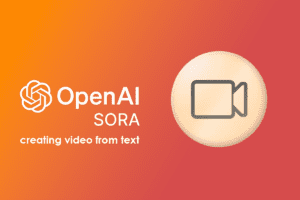OpenAI’s Sora and the Future of Video Content with AI
OpenAI’s Sora and the Future of Video Content with AI
Introduction
Sora OpenAI.In recent years, artificial intelligence (AI) has made significant advancements in various fields, including content creation. OpenAI, a San Francisco-based research lab, has recently introduced a new AI-powered video creation tool called Sora. This document will explore the capabilities of Sora and its potential impact on the future of video content.
What is Sora?
Sora is an AI model developed by OpenAI that can compose and generate human-like videos from text descriptions. The tool utilizes advanced deep learning algorithms and natural language processing capabilities to generate realistic and compelling videos.
How Does Sora Work?
Sora is composed of multiple AI models, each responsible for specific aspects of the video generation process. One of the most significant components of Sora is the Transformer model, which encodes text descriptions into visual representations. The model learns from a massive dataset of videos and text descriptions, allowing it to understand the content and style preferences of human-generated videos.
Once the text description is encoded, Sora’s other AI models work together to generate the video. The models analyze the content of the description, including emotions, actions, and objects, and generate corresponding visual elements. These elements, including characters, backgrounds, and animations, are then combined to create a cohesive and realistic video.
Applications of Sora
Sora’s ability to generate realistic videos opens up new possibilities for content creation across various industries. Some potential applications of Sora include:
1. Film and Television Production: Sora can help streamline the production process by allowing filmmakers to generate scripts, storyboards, and even entire videos. This could save time, reduce costs, and enable filmmakers to explore more creative possibilities.
2. Virtual Reality (VR): Sora can enhance VR experiences by providing more realistic and interactive virtual environments. By generating virtual environments on demand, Sora could revolutionize the way VR content is created and consumed.
3. Virtual Advertising: Sora can optimize video advertisements by automatically generating customized content based on target audience preferences. This could make advertising more effective and personalized, leading to increased engagement and conversion rates.
4. Medical Simulation: Sora’s ability to synthesize realistic videos could be utilized for medical simulations, allowing healthcare professionals to train and practice in virtual environments without potential risks.
Challenges and Considerations
While Sora presents exciting possibilities, it is important to consider potential challenges and considerations:
1. Privacy Concerns: The ability to generate realistic videos raises concerns about privacy and ethical considerations. OpenAI has committed to addressing these concerns and ensuring that Sora’s output remains safe for use.
2. Quality Control: While Sora can generate realistic videos, there is still room for refinement and improvement. Developing mechanisms to ensure the accuracy and authenticity of generated videos will be crucial for widespread adoption.
3. Human Creativity: While Sora can perform certain creative tasks, it cannot replicate the creativity and nuance of humans. Engaging with human artists and storytellers will still be necessary for producing high-quality video content.
Conclusion
OpenAI’s Sora represents a major breakthrough in AI-powered video generation. The tool’s ability to turn text descriptions into realistic videos opens up new opportunities for content creation across various industries. While challenges exist, Sora’s potential is immense, and it holds the potential to transform the way we create and experience video content. As AI continues to advance, Sora and other AI-powered tools will undoubtedly play a significant role in the future of video content.

